Recreational mathematics is mathematics carried out for recreation (entertainment) rather than as a strictly research-and-application-based professional activity or as a part of a student's formal education. Although it is not necessarily limited to being an endeavor for amateurs, many topics in this field require no knowledge of advanced mathematics. Recreational mathematics involves mathematical puzzles and games, often appealing to children and untrained adults and inspiring their further study of the subject.

In combinatorics and in experimental design, a Latin square is an n × n array filled with n different symbols, each occurring exactly once in each row and exactly once in each column. An example of a 3×3 Latin square is
In combinatorics, two Latin squares of the same size (order) are said to be orthogonal if when superimposed the ordered paired entries in the positions are all distinct. A set of Latin squares, all of the same order, all pairs of which are orthogonal is called a set of mutually orthogonal Latin squares. This concept of orthogonality in combinatorics is strongly related to the concept of blocking in statistics, which ensures that independent variables are truly independent with no hidden confounding correlations. "Orthogonal" is thus synonymous with "independent" in that knowing one variable's value gives no further information about another variable's likely value.

Kakuro or Kakkuro or Kakoro is a kind of logic puzzle that is often referred to as a mathematical transliteration of the crossword. Kakuro puzzles are regular features in many math-and-logic puzzle publications across the world. In 1966, Canadian Jacob E. Funk, an employee of Dell Magazines, came up with the original English name Cross Sums and other names such as Cross Addition have also been used, but the Japanese name Kakuro, abbreviation of Japanese kasan kurosu, seems to have gained general acceptance and the puzzles appear to be titled this way now in most publications. The popularity of Kakuro in Japan is immense, second only to Sudoku among Nikoli's famed logic-puzzle offerings.

Sudoku is a logic-based, combinatorial number-placement puzzle. In classic Sudoku, the objective is to fill a 9 × 9 grid with digits so that each column, each row, and each of the nine 3 × 3 subgrids that compose the grid contains all of the digits from 1 to 9. The puzzle setter provides a partially completed grid, which for a well-posed puzzle has a single solution.

Mathematics can be used to study Sudoku puzzles to answer questions such as "How many filled Sudoku grids are there?", "What is the minimal number of clues in a valid puzzle?" and "In what ways can Sudoku grids be symmetric?" through the use of combinatorics and group theory.
In mathematics, a combinatorial explosion is the rapid growth of the complexity of a problem due to the way its combinatorics depends on input, constraints and bounds. Combinatorial explosion is sometimes used to justify the intractability of certain problems. Examples of such problems include certain mathematical functions, the analysis of some puzzles and games, and some pathological examples which can be modelled as the Ackermann function.

A standard Sudoku contains 81 cells, in a 9×9 grid, and has 9 boxes, each box being the intersection of the first, middle, or last 3 rows, and the first, middle, or last 3 columns. Each cell may contain a number from one to nine, and each number can only occur once in each row, column, and box. A Sudoku starts with some cells containing numbers (clues), and the goal is to solve the remaining cells. Proper Sudokus have one solution. Players and investigators use a wide range of computer algorithms to solve Sudokus, study their properties, and make new puzzles, including Sudokus with interesting symmetries and other properties.
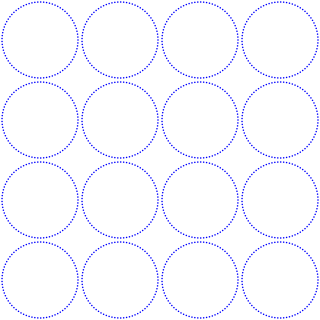
In the mathematical field of graph theory, the Brouwer–Haemers graph is a 20-regular undirected graph with 81 vertices and 810 edges. It is a strongly regular graph, a distance-transitive graph, and a Ramanujan graph. Although its construction is folklore, it was named after Andries Brouwer and Willem H. Haemers, who proved its uniqueness as a strongly regular graph.
Jason Rosenhouse is an American author and professor of mathematics at James Madison University, where he was originally appointed an assistant professor in 2003. He became a full professor in 2014. His research focuses on algebraic graph theory, as well as analytic number theory. He ran the blog Evolution Blog at National Geographic's ScienceBlogs, where he frequently criticized creationism. In late 2016 he announced that he was abandoning the blogging format. He has contributed to the pro-evolution blog The Panda's Thumb, and has also contributed to the Huffington Post about topics such as the Higgs boson, in addition to creationism.
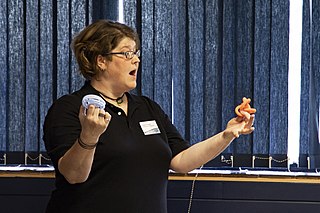
Laura Anne Taalman, also known as mathgrrl, is an American mathematician known for her work on the mathematics of Sudoku and for her mathematical 3D printing models. Her mathematical research concerns knot theory and singular algebraic geometry; she is a professor of mathematics at James Madison University.

In the mathematics of Sudoku, the Sudoku graph is an undirected graph whose vertices represent the cells of a (blank) Sudoku puzzle and whose edges represent pairs of cells that belong to the same row, column, or block of the puzzle. The problem of solving a Sudoku puzzle can be represented as precoloring extension on this graph. It is an integral Cayley graph.
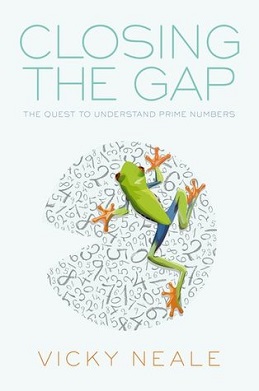
Closing the Gap: The Quest to Understand Prime Numbers is a book on prime numbers and prime gaps by Vicky Neale, published in 2017 by the Oxford University Press (ISBN 9780198788287). The Basic Library List Committee of the Mathematical Association of America has suggested that it be included in undergraduate mathematics libraries.
Euler's Gem: The Polyhedron Formula and the Birth of Topology is a book on the formula for the Euler characteristic of convex polyhedra and its connections to the history of topology. It was written by David Richeson and published in 2008 by the Princeton University Press, with a paperback edition in 2012. It won the 2010 Euler Book Prize of the Mathematical Association of America.

Pearls in Graph Theory: A Comprehensive Introduction is an undergraduate-level textbook on graph theory by Nora Hartsfield and Gerhard Ringel. It was published in 1990 by Academic Press with a revised edition in 1994 and a paperback reprint of the revised edition by Dover Books in 2003. The Basic Library List Committee of the Mathematical Association of America has suggested its inclusion in undergraduate mathematics libraries.
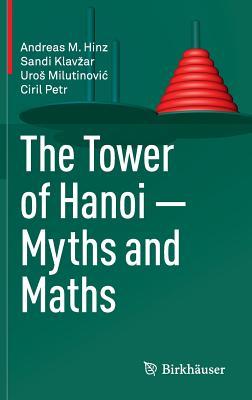
The Tower of Hanoi – Myths and Maths is a book in recreational mathematics, on the tower of Hanoi, baguenaudier, and related puzzles. It was written by Andreas M. Hinz, Sandi Klavžar, Uroš Milutinović, and Ciril Petr, and published in 2013 by Birkhäuser, with an expanded second edition in 2018. The Basic Library List Committee of the Mathematical Association of America has suggested its inclusion in undergraduate mathematics libraries.
Erdős on Graphs: His Legacy of Unsolved Problems is a book on unsolved problems in mathematics collected by Paul Erdős in the area of graph theory. It was written by Fan Chung and Ronald Graham, based on a 1997 survey paper by Chung, and published in 1998 by A K Peters. A softcover edition with some updates and corrections followed in 1999.
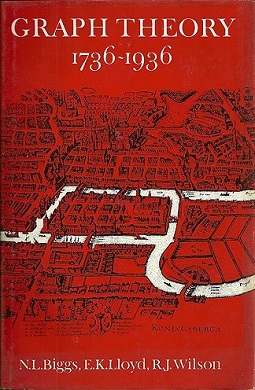
Graph Theory, 1736–1936 is a book in the history of mathematics on graph theory. It focuses on the foundational documents of the field, beginning with the 1736 paper of Leonhard Euler on the Seven Bridges of Königsberg and ending with the first textbook on the subject, published in 1936 by Dénes Kőnig. Graph Theory, 1736–1936 was edited by Norman L. Biggs, E. Keith Lloyd, and Robin J. Wilson, and published in 1976 by the Clarendon Press. The Oxford University Press published a paperback second edition in 1986, with a corrected reprint in 1998.

Games, Puzzles, and Computation is a book on game complexity, written by Robert Hearn and Erik Demaine, and published in 2009 by A K Peters. It is revised from Hearn's doctoral dissertation, which was supervised by Demaine. The Basic Library List Committee of the Mathematical Association of America has recommended it for inclusion in undergraduate mathematics libraries.

Problem Solving Through Recreational Mathematics is a textbook in mathematics on problem solving techniques and their application to problems in recreational mathematics, intended as a textbook for general education courses in mathematics for liberal arts education students. It was written by Bonnie Averbach and Orin Chein, published in 1980 by W. H. Freeman and Company, and reprinted in 2000 by Dover Publications.













